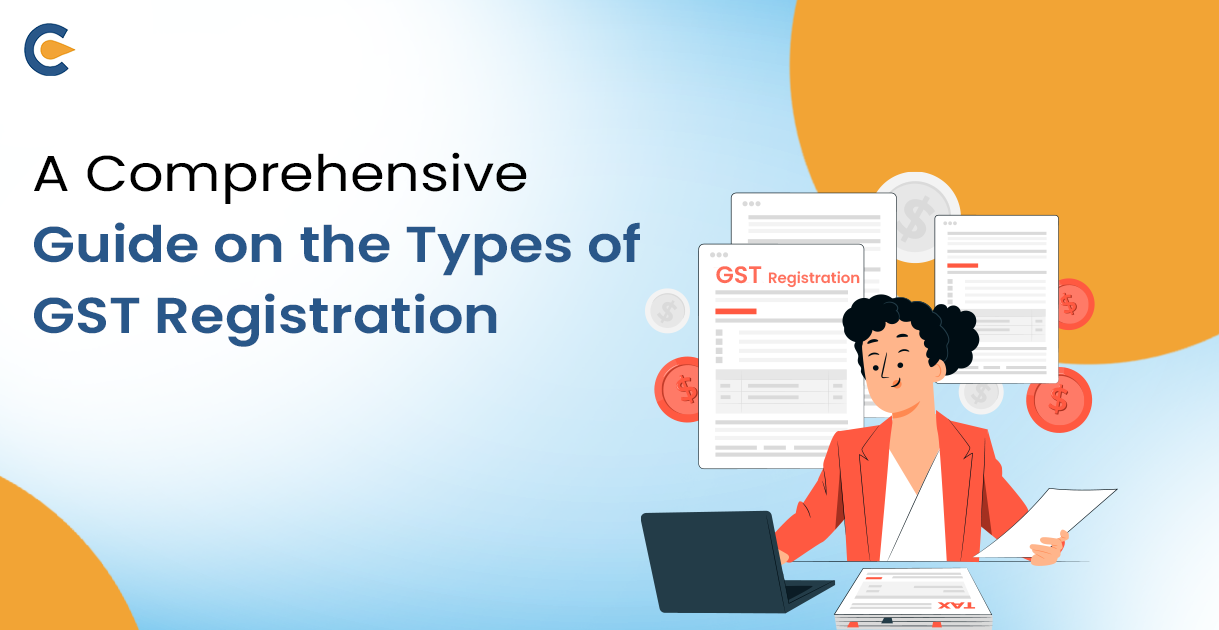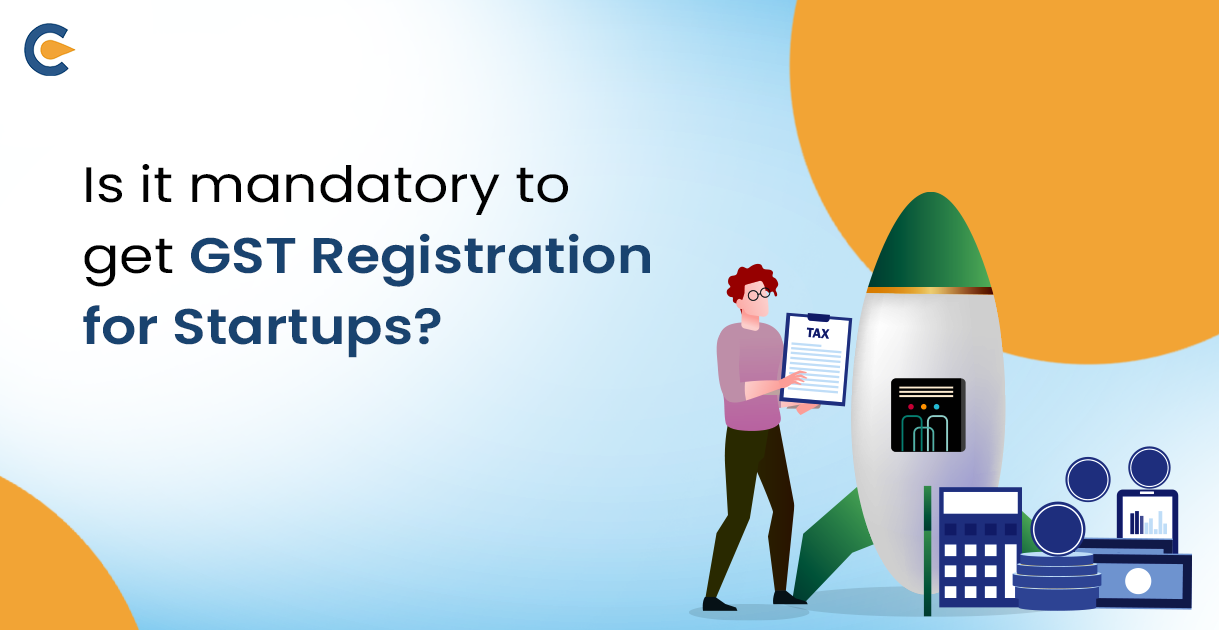Currently, there are three prevailing types of GST registration in the country on the basis of administration Level- Central GST, State/UT GST, and Integrated GST (Also known as IGST). GST Registration is accompanied by a GSTIN Number or GST Identification Number. In order to claim GST input tax credit on inward supply, such as purchases, and to collect and pay GST on outward supplies, such as sales, the assesseneeds GSTIN. Since GST is a tax on a valid “supply” event, GST requires registration from all suppliers. Small companies operating in the states of Assam, Arunachal Pradesh, Himachal Pradesh, Uttarakhand, Manipur, Mizoram, Sikkim, Meghalaya, Nagaland, or Tripura, however, do not need to register if their total annual revenue is less than Rupees 20 lakh (10 lakh if they are located in one of these states). Small companies that have less than the qualifying limit in turnover may nevertheless choose to voluntarily register.
Types of GST Registration
GST Registration in India is segregated under various heads. Based on the event, supply and requirement, GST Registration is divided into three categories, they are –
Types of GST Registration on the basis of the mandate of GST Registration
The types of GST registration on the basis of the mandate of the GST registration are mentioned below:
1. Compulsory Registration
Under certain circumstances, even if a valid transaction of sales, the dealer may be required to take Compulsory Registration under GST under certain circumstances. For instance, interstate sales of taxable commodities, online retailers, online sellers, etc.
2. Voluntary Registration
When a business is not required to compulsorily register for GSTIN under the law still acquires a GST registration is known as voluntary registration.
3. Registration under the Composition Scheme
The assessee must register under the GST composition scheme if the total turnover of the company is more than the prescribed threshold limit of Rs. 40 lacs (Rs. 20 lacs for special category states) for goods or Rs. 20 lacs (Rs. 10 lacs for special category states) but less than Rs. 1.5 Cr (Rs. 75 lacs for special category states). In the case of supply of services, the dealer may register under the Composition Scheme if the total turnover surpasses Rs. 20 lacs (Rs. 10 lacs for special category states) but falls below Rs. 50 lacs. The assessee is required to pay GST under this system at a predetermined rate based on it’s turnover, and there is less compliance required than with a standard registration.
4. No Registration Required
An assesses is not required to have a GST Registration in the following circumstances –
- The aggregate turnover of the business for which the registration sought does not exceed Rs. 40 lakhs (20 lakhs in certain states).
- The business is exempted f from the requirement of compulsory registration.
- Cultivators and farmers are not covered under the GST supply regime for crops produced from cultivated land.
On the basis of Administration Level
The types of GST registration on the basis of the administration level of the GST registration are mentioned below:
1. State Goods and Services Tax (SGST)/ UT Goods and Services Tax (UTGST)
SGST refers to the tax payable on the valid supply of goods and services within a state or a Union Territory. It has replaced several taxes such as Octroi, Purchase tax, Value Added Tax (VAT), Cess, sales tax etc.
2. Central Goods and Services Tax (CGST)
CGST is the tax on the supply of goods and services across state borders. It has subsumed earlier taxes such as Customs and excise duty, Central Excise duty, Service Tax etc.
3. Integrated Goods and Services Tax (IGST)
IGST is applicable to the sale on supply of goods and services between one state and another.
Benefits of GST Registration in India
The benefits of GST registration in India are mentioned below:
Eliminates Cascading Effect of Tax
The most striking feature of GST registration in India is the comprehensive nature of GST, which aims to prevent the impact of cascading taxes. A tax on tax in which the tax responsibility was transmitted at each stage of the transaction is known as the cascading impact. The item’s price goes up as a result. Since the GST directly affects the price of products and services, the cascading effect is eliminated.
Streamlined and Transparent Process
Starting a business under the GST structure and selecting out of available Types of GST Registration has become more streamlined as you won’t have to deal with different tax rules in different states. The centralized registration system of GST and Online registration Procedures cuts down on the time taken to establish a business as well as removes the high application fees that one has to pay. GST registration also makes it easier for businesses to carry out business transactions across state borders without having to deal with separate tax regulations.
Prevents Tax Evasion and Promotes Tax Saving
The input credit is accessible to the receiver if the supplier includes the data in its return. This encourages the suppliers hence reducing tax evasion. Additionally, Online GST Registration Process enables individuals and businesses to claim input tax credit on any supply or purchases made in the course of business. GST Registration can provide effective tax planning and significant tax savings for the assessee.
Ease Compliances for Tax Payers
As compared to earlier tax regime, lesser returns and compliances are needed to be filed under GST. Only about eleven returns are filed under GST; four of these are basic filings that are filed under GST and are applicable to all ordinary taxable individuals. To report a list of sales invoices and accompanying documents for the tax period, the primary GSTR-1 is filed.
Integration of E-Commerce Operators
Before GST, the supply and sale of goods through online medium or e-commerce were covered under the VAT rules, with no separate curriculum. E-Commerce platforms were required to file separate VAT declarations and were exempted from compulsory VAT Registration for the supply of goods and services. This led to preferential treatment in favour of certain big MNCs and E-commerce giants, as they were not required to abide by VAT compliances. Under GST, all of these inconsistent policies and perplexing requirements have been eliminated. Since these are applicable throughout India, GST has for the first time explicitly drawn out the general laws applying to the e-commerce sector in that country.
Consequences for non-GST Registration in India
In case of non-payment of GST or undercutting tax regulations, the appropriate equivalent of 10% of the unpaid tax amount is assessed if a taxpayer either fails to pay the required tax or pays an amount less than what is determined. The minimum amount of penalty, cannot be less than Rs. 10,000/-This penalty is in the case of computation or technical errors. In case of wilful default or evasion of GST, the assessee shall be liable to pay 100% of the due tax amount.
Conclusion
GST registration in India is the most important revenue compliance to be followed by individuals and entities falling under a specific turnover range. Goods and Services Tax has been introduced to subsume and streamline the indirect tax and cess regime in India and helps to benefit small business owners and individuals.
If you are looking to obtain a GST Registration for your business, fund or enterprise, you require a seasoned
Frequently Asked Questions (FAQs)
- 1. Is GST Registration in India Mandatory for Businesses?
Yes, GST Registration is mandatory for businesses and individuals operating in India.
- 2. Which entities are eligible for GST registration in India?
Sellers and suppliers of Goods and Services having an annual turnover of Rs. 20 lakhs, whereas for service providers the same is applicable to businesses having an annual turnover of Rs. 40 crore.
- 3. What is the Validity of a GST Registration?
There is no validity of a GST registration. Once A GST registration is granted by eh regulatory authorities, it remains valid indefinitely, until suspended or cancelled by the CBIC.
- 4. Based on the Administration Level, how many types of GST Registrations are there?
Based on the Administration Level, there are three categories of GST Registrations – Central GST (CGST), State/UT GST (SGST or UTGST) or Integrated GST (IGST) registration.
- 5. Can a person obtain multiple GST registrations in one State?
Yes, in accordance with Section 25(2), an individual who operates more than one place of business in a State or UT may apply for a separate registration for each location in a state.
- 6. Which of the existing taxes have been subsumed under the GST?
The following taxes have been subsumed within the GST – Central Excise duty, Service Tax, Value Added Tax (VAT), State VAT, Purchase Tax, Luxury Tax, Central Sales Tax, Octroi and Entry taxes etc.
- 7. What are the 4 types of GST registration?
GST has been divided into 4 types of GST registration, based on the level of administration and implementation. They are the Central Goods and Services Tax (CGST), State /UT Goods and Services Tax (SGST or UTGST), and Integrated Goods and Services Tax (IGST).
- 8. Who needs GST registration?
All businesses that have revenue exceeding the threshold of Rs. 40 lakh, Rs. 20 lakhs, or Rs. 10 lakhs, depending on the situation, are required to register as regular taxable persons under the Goods and Services Tax (GST).
Read Our Article: GST Registration Requirements











